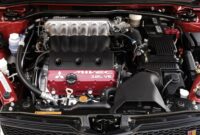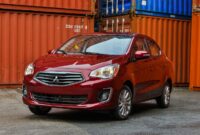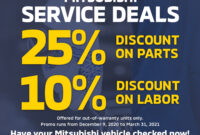Is a Mitsubishi a good first car for a new driver? – Is a Mitsubishi a good first car for a new driver? That’s a question many newbies grapple with. Choosing your first set of wheels is a big deal, and navigating the world of car brands, models, and features can feel overwhelming. Mitsubishi, with its range of affordable and reliable options, often pops up on the radar. But is it the
-right* choice for a fresh-faced driver?
Let’s dive into the details to find out if a Mitsubishi truly fits the bill.
This guide will unpack everything you need to know, from reliability and safety features to fuel efficiency and insurance costs. We’ll compare Mitsubishis to other popular first-car choices, helping you make an informed decision that aligns with your needs and budget. Get ready to navigate the exciting (and sometimes daunting) world of car ownership!
Reliability and Maintenance Costs
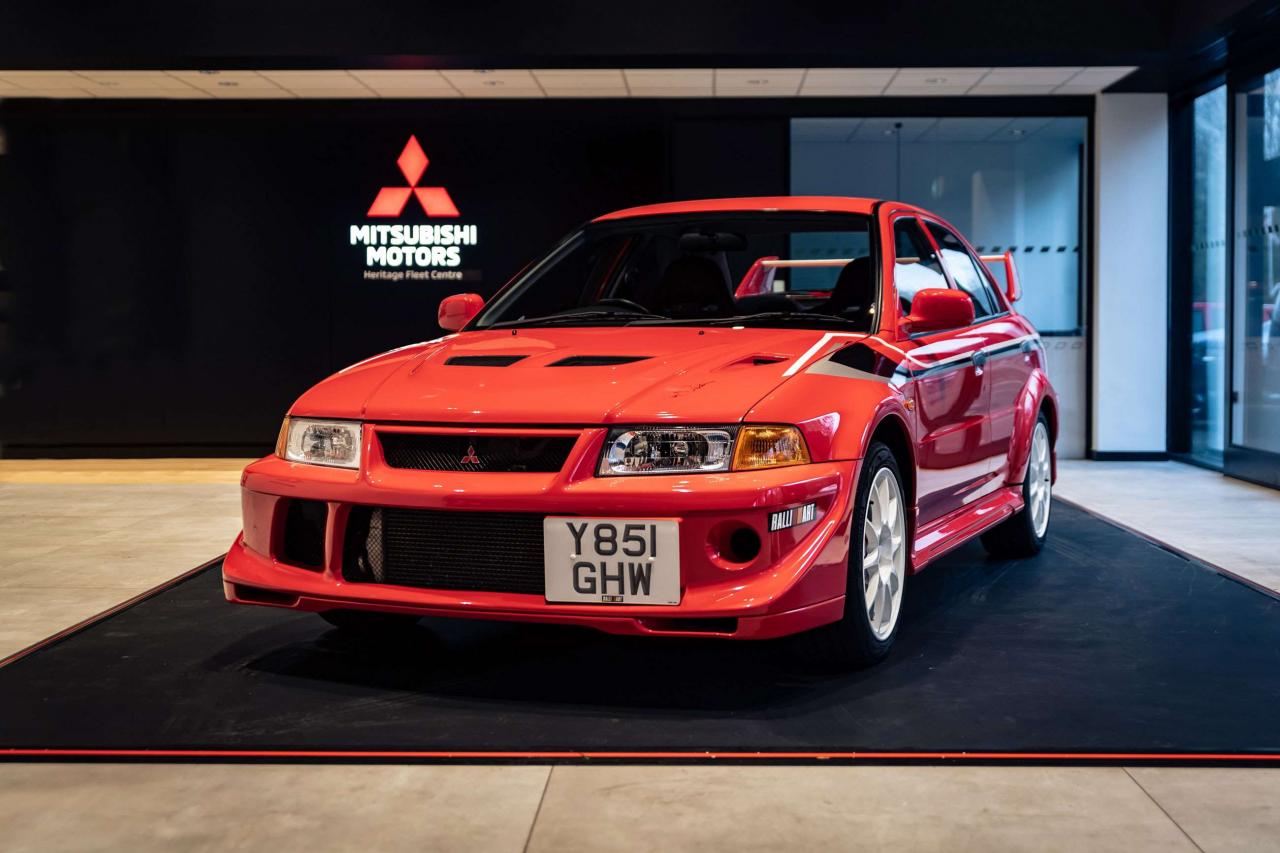
Choosing a first car is a big decision, and reliability is a top priority. While a new car offers peace of mind, used vehicles often present a more budget-friendly option. Understanding the reliability and maintenance costs associated with a used Mitsubishi, compared to other popular choices for new drivers, is crucial for making an informed decision. This section delves into the specifics of Mitsubishi’s reliability, typical maintenance expenses, common repair issues, and a cost comparison with similar vehicles.
Mitsubishi Reliability Compared to Competitors
Mitsubishi’s reliability has fluctuated over the years. Some models, particularly those from the early 2000s, have garnered a reputation for requiring more frequent repairs than their Honda or Toyota counterparts. However, more recent models have shown improvements in reliability ratings. For new drivers, this means carefully considering the specific year and model of the Mitsubishi. Direct comparison with brands like Honda and Toyota, known for their generally high reliability scores, is essential.
Sites like RepairPal and J.D. Power provide valuable resources for checking reliability ratings based on model year and specific vehicle history. Researching specific models and their reliability scores before purchasing is highly recommended.
Typical Maintenance Costs for Used Mitsubishi Vehicles
The cost of maintaining a used Mitsubishi varies significantly depending on the age, mileage, and model. Routine maintenance, such as oil changes, tire rotations, and brake pad replacements, are relatively inexpensive, falling within the typical range for comparable vehicles. However, more significant repairs can be costly. Factors such as the availability of parts and the labor rates in your area also play a crucial role.
Budgeting for unexpected repairs is vital, as even well-maintained vehicles can experience unforeseen mechanical issues. It’s advisable to create a contingency fund to cover unexpected repair expenses.
Common Repair Issues in Popular Mitsubishi Models
Certain Mitsubishi models frequently purchased by new drivers, such as the Lancer and Outlander, have experienced some common repair issues. These include problems with the transmission, electrical systems, and air conditioning. The severity and frequency of these issues vary depending on the year and specific model. Thorough pre-purchase inspections by a trusted mechanic are highly recommended to identify any potential problems before committing to a purchase.
Online forums and owner reviews can provide insights into common issues reported by other Mitsubishi owners.
Comparison of Repair Costs
The following table compares the average annual repair costs of a Mitsubishi Lancer, a Honda Civic, and a Toyota Corolla, popular choices among new drivers. Remember that these are averages and can vary significantly based on individual vehicle condition and maintenance history.
Considering a Mitsubishi as your first car? Their reliability is often debated, but even the most dependable vehicles can experience glitches. If you find yourself locked out because your key fob isn’t working, check out this helpful guide on How to fix a Mitsubishi key fob not working to get back on the road. Knowing how to troubleshoot minor issues is a valuable skill for any new driver, regardless of the car’s make.
So, is a Mitsubishi right for you? Weigh the pros and cons carefully!
| Model | Average Repair Cost (Annual) | Common Repair Issues | Parts Availability |
|---|---|---|---|
| Mitsubishi Lancer | $500 – $800 | Transmission problems, electrical issues, air conditioning malfunctions | Generally good, but may vary depending on the part and year |
| Honda Civic | $300 – $500 | Minor electrical glitches, occasional brake issues | Excellent, widely available |
| Toyota Corolla | $250 – $400 | Relatively few major issues reported | Excellent, widely available |
Safety Features and Ratings: Is A Mitsubishi A Good First Car For A New Driver?
Choosing a safe car is paramount, especially for new drivers. Mitsubishi offers a range of vehicles with varying safety features and ratings, making it crucial to understand what’s available before making a decision. This section will explore the safety aspects of Mitsubishi cars, comparing them to competitors and highlighting the importance of advanced driver-assistance systems (ADAS).
Standard Safety Features in Mitsubishi Models, Is a Mitsubishi a good first car for a new driver?
Mitsubishi typically equips its vehicles with a comprehensive suite of standard safety features. These often include anti-lock brakes (ABS), electronic brake-force distribution (EBD), electronic stability control (ESC), multiple airbags (front, side, and curtain), and a tire pressure monitoring system (TPMS). The specific features vary depending on the model and trim level; higher trims usually include more advanced features.
For instance, the Mirage, a popular entry-level model, usually includes a basic set of these features, while higher-end models like the Outlander may boast more sophisticated systems. It’s essential to check the specific specifications for the year and model you are considering.
Comparison of Safety Ratings
Safety ratings from organizations like the Insurance Institute for Highway Safety (IIHS) and the National Highway Traffic Safety Administration (NHTSA) provide valuable insights into a vehicle’s crashworthiness. While specific ratings fluctuate based on the model year and testing methodology, Mitsubishi vehicles generally receive competitive ratings. Direct comparisons to competitors like Honda, Toyota, and Mazda often show similar performance in many crash tests.
However, it’s vital to consult the latest IIHS and NHTSA reports for the most up-to-date and specific ratings for the particular Mitsubishi model you are interested in. These reports often break down performance in various crash scenarios, providing a detailed picture of the vehicle’s safety capabilities.
Impact of Advanced Driver-Assistance Systems (ADAS)
Advanced Driver-Assistance Systems (ADAS) are increasingly important for new drivers. Features like forward collision warning (FCW), automatic emergency braking (AEB), lane departure warning (LDW), and adaptive cruise control (ACC) can significantly enhance safety. For inexperienced drivers, these systems provide an extra layer of protection, helping them avoid accidents caused by inattention or errors in judgment. For example, AEB can automatically apply the brakes to prevent or mitigate a collision, while LDW alerts the driver if the vehicle is drifting out of its lane.
The availability of these ADAS features varies across Mitsubishi models and trim levels; higher trims usually offer a more comprehensive suite of these advanced safety technologies.
Top 5 Safety Features in Entry-Level Mitsubishi Models
Choosing a first car requires careful consideration of safety features. While specific features vary by model year, a common set of important safety features typically found in entry-level Mitsubishi models includes:
- Anti-lock Braking System (ABS)
- Electronic Stability Control (ESC)
- Multiple Airbags (Front, Side)
- Tire Pressure Monitoring System (TPMS)
- Daytime Running Lights (DRL)
These features, while not exhaustive, represent a solid foundation for enhanced safety in entry-level vehicles. Remember to always refer to the specific specifications of the model and year you are considering.
Fuel Efficiency and Running Costs
Choosing a first car often involves balancing affordability with practicality. Fuel efficiency plays a significant role in both, impacting not only your monthly expenses but also your environmental footprint. Let’s delve into how Mitsubishi models fare in this crucial area.Mitsubishi offers several models popular among new drivers, each with varying fuel economy ratings. Understanding these differences can help you make an informed decision that aligns with your budget and driving habits.
Factors beyond the car’s inherent efficiency also contribute to your overall running costs.
Mitsubishi Fuel Efficiency Comparison
Fuel efficiency is often expressed in miles per gallon (MPG), representing the distance a vehicle can travel on one gallon of fuel. Higher MPG numbers indicate better fuel economy. Below is a table comparing the city, highway, and combined MPG for three popular Mitsubishi models often considered as good first cars: the Mirage, the Outlander Sport, and the Eclipse Cross.
Considering a Mitsubishi as your first car? Their reliability is often praised, making them a solid choice for new drivers. If you’re looking for a used option and prefer the space of an SUV, check out this list of Best used Mitsubishi SUVs under $15000 to find a great deal. Ultimately, the best first car depends on your budget and needs, but a used Mitsubishi is definitely worth considering.
Note that these figures are estimates and can vary depending on driving conditions, vehicle maintenance, and individual driving style.
| Model | City MPG | Highway MPG | Combined MPG |
|---|---|---|---|
| Mirage | 35 | 43 | 38 |
| Outlander Sport | 24 | 29 | 26 |
| Eclipse Cross | 25 | 28 | 26 |
Mitsubishi Mirage vs. Competitor
To illustrate the fuel efficiency of a Mitsubishi Mirage, let’s compare it to a similarly sized and priced vehicle from another manufacturer, such as the Toyota Yaris. The Toyota Yaris often boasts comparable city and highway MPG figures to the Mirage, placing both vehicles in a similar range for fuel economy. The specific MPG will vary depending on the model year and trim level of each car.
However, both generally represent fuel-efficient options for first-time car buyers.
Factors Influencing Mitsubishi Running Costs
Beyond fuel consumption, several factors contribute to the overall running costs of a Mitsubishi vehicle. These include insurance premiums, which can vary based on the driver’s age, location, and driving history; maintenance expenses, such as oil changes, tire rotations, and potential repairs; and the cost of parts and labor if repairs are needed. Regular maintenance, as recommended by the manufacturer, can help mitigate unexpected repair costs and extend the vehicle’s lifespan, ultimately saving money in the long run.
Additionally, the price of fuel itself fluctuates, impacting the overall cost of ownership.
Insurance Costs and Affordability
Choosing a car, especially as a new driver, involves considering more than just the purchase price. Insurance premiums play a significant role in the overall cost of ownership, and understanding how these premiums are calculated for a Mitsubishi is crucial. Several factors interact to determine your insurance rate, making it essential to research thoroughly before committing to a specific model.Factors influencing insurance premiums for Mitsubishi vehicles are complex and intertwined.
The model of the car itself is a major factor; sportier models or those with a history of higher repair costs tend to attract higher premiums. The age of the vehicle also impacts insurance costs; older cars are generally cheaper to insure due to lower replacement value, while newer cars, especially those with advanced safety features, may command higher premiums initially.
Finally, the driver’s experience is paramount; new drivers typically pay significantly more than experienced drivers due to the higher statistical risk they pose. This is because insurance companies assess risk based on driving history and statistical probabilities of accidents.
Mitsubishi Lancer Insurance Costs Compared
The Mitsubishi Lancer, a popular choice for first-time buyers due to its affordability and reliability, provides a useful case study. Comparing its average insurance costs to a similar car from a different brand, such as a Honda Civic, reveals some interesting insights. While precise figures vary by location, insurer, and specific coverage options, studies suggest that the Lancer often falls within a comparable insurance cost range to the Civic.
Both vehicles are generally considered to be in the mid-range in terms of insurance premiums, neither exceptionally expensive nor exceptionally cheap to insure. The actual difference in premiums between the two is often minimal, sometimes favoring one, sometimes the other, depending on the variables mentioned above.
Reducing Insurance Costs for New Drivers
Several strategies can help new drivers purchasing a Mitsubishi reduce their insurance costs. Opting for a less powerful engine or a base model can lower premiums, as can choosing older, less expensive vehicles. Maintaining a clean driving record is absolutely crucial; even minor infractions can lead to significantly higher premiums. Taking a defensive driving course is another effective way to demonstrate responsible driving habits and potentially qualify for discounts.
Bundling car insurance with other types of insurance, such as homeowner’s or renter’s insurance, can also lead to significant savings.
Insurance Discounts for New Mitsubishi Drivers
Many insurance companies offer discounts specifically targeted at new drivers or those purchasing certain Mitsubishi models. These discounts can vary widely, so it’s crucial to shop around and compare quotes from multiple insurers. Some common discounts include good student discounts (for maintaining a certain GPA), safe driver discounts (for accident-free driving history), and multi-car discounts (for insuring multiple vehicles under the same policy).
Specific Mitsubishi models might also qualify for manufacturer-sponsored programs or partnerships with insurance providers, leading to further cost reductions. Always inquire about available discounts during the quote process to maximize savings.
Driving Experience and Features
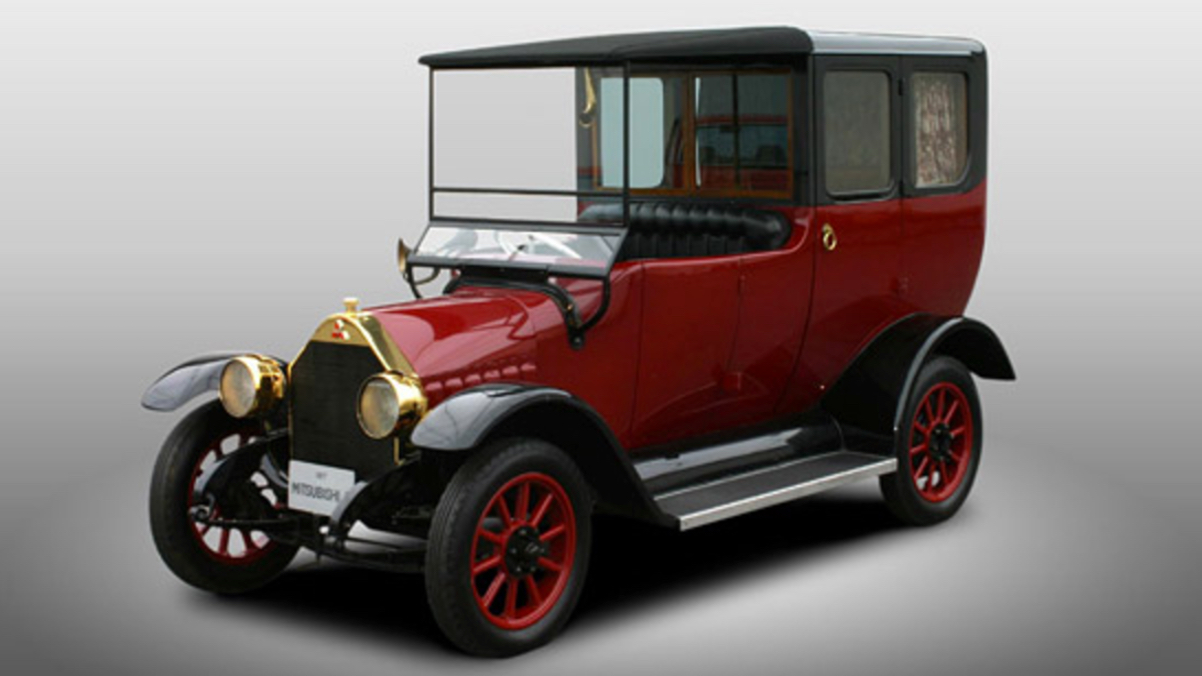
Entry-level Mitsubishi models generally offer a comfortable and easy-to-manage driving experience, perfect for new drivers navigating the roads for the first time. While not known for exhilarating performance, they prioritize practicality and ease of use, making them a sensible choice for beginners. The focus is on predictable handling and a comfortable ride, rather than sporty agility.Mitsubishi’s entry-level offerings typically provide a smooth and forgiving ride, minimizing the impact of bumps and uneven road surfaces.
This is a significant advantage for new drivers still developing their driving skills and confidence. The steering is usually light and responsive, making maneuvering in tight spaces and parking easier. While acceleration might not be breathtaking, it’s sufficient for everyday driving needs.
Handling and Performance in Entry-Level Models
The driving experience in entry-level Mitsubishi models like the Mirage or Attrage is characterized by its ease of handling. The steering is light and responsive, making it simple to navigate city streets and parking lots. Acceleration is adequate for everyday driving, although not particularly sporty. The suspension is tuned for comfort, prioritizing a smooth ride over sharp handling.
This makes them ideal for new drivers who prioritize comfort and ease of use over spirited performance. Compared to sportier models from other manufacturers, the Mitsubishi experience is more relaxed and less demanding.
Feature Comparison with Competitors
A basic Mitsubishi model, such as the Mirage, might offer features like power steering, air conditioning, and a basic sound system. Comparing this to a similarly priced competitor like a Hyundai Accent or Toyota Yaris, we might find similar basic features. However, the specific details of these features (e.g., the quality of the sound system or the sophistication of the climate control) might differ.
While Mitsubishi might not always lead in terms of cutting-edge technology, they typically provide a reliable and functional set of features at a competitive price point. For a new driver focused on functionality and reliability, this is often a more important consideration than having the latest bells and whistles.
Infotainment System User-Friendliness
Mitsubishi’s infotainment systems in entry-level models are generally straightforward and user-friendly. While they may lack the advanced features found in higher-end models or competitors, their simplicity is a benefit for new drivers. The interfaces are typically intuitive, with easy-to-understand menus and controls. This avoids overwhelming new drivers with complex technology and allows them to focus on the road.
The integration with smartphones via Apple CarPlay or Android Auto is a significant advantage, providing access to familiar navigation and communication apps.
Key Features for New Drivers
The ease of driving a Mitsubishi for a new driver is significantly enhanced by several key features:
- Light and responsive steering: Makes maneuvering and parking significantly easier.
- Smooth and comfortable ride: Minimizes the impact of road imperfections, contributing to a more relaxed driving experience.
- Good visibility: Large windows and mirrors enhance driver awareness, which is crucial for new drivers.
- Simple and intuitive infotainment system: Minimizes distractions and allows for easy access to essential functions.
- Reliable and easy-to-maintain engine: Reduces the likelihood of unexpected breakdowns and maintenance issues.
Resale Value and Depreciation
Choosing a first car involves considering long-term costs, and resale value is a crucial factor. Understanding how a Mitsubishi’s value holds up over time can help you make an informed decision. While no car retains its value perfectly, some brands depreciate faster than others. Let’s explore how Mitsubishi fares in this aspect.Depreciation rates for used Mitsubishi vehicles are generally considered to be in line with the average for similar vehicles in their class.
This means they neither significantly outperform nor underperform other brands in terms of retaining value. Several factors, however, significantly influence a Mitsubishi’s resale price.
Factors Affecting Mitsubishi Resale Value
Several key factors influence how much a used Mitsubishi will be worth when you decide to sell it. These factors interact to determine the final resale price, so understanding them is crucial for maximizing your return on investment.Model year, mileage, and condition are the three major pillars determining a used Mitsubishi’s resale value. Newer models naturally retain more value due to technological advancements and less wear and tear.
Lower mileage vehicles also command higher prices as they suggest less use and potentially less wear on the engine and other components. A well-maintained vehicle, demonstrably free of significant damage or accident history, will always fetch a better price. A comprehensive service history adds further weight to the car’s condition.
Maximizing Resale Value of a Mitsubishi
Taking proactive steps to maintain your Mitsubishi can significantly boost its resale value. Regular servicing at authorized dealerships, meticulously keeping all service records, and addressing any minor repairs promptly can all contribute to a higher resale price. A clean and well-maintained interior also makes a significant difference to potential buyers. Consider detailing the car before selling and repairing any minor cosmetic flaws.
Thoroughly documenting the vehicle’s history, including maintenance records and any upgrades, will further increase buyer confidence and potentially command a higher price.
Mitsubishi Depreciation Comparison
The following table compares the estimated depreciation of three different Mitsubishi models over a five-year period. These figures are estimations based on average market trends and should be considered as approximations only. Actual depreciation will vary depending on the specific condition of the vehicle, mileage, and market conditions at the time of sale.
| Model | Year 0 Value (USD) | Year 1 Value (USD) | Year 2 Value (USD) | Year 3 Value (USD) | Year 4 Value (USD) | Year 5 Value (USD) |
|---|---|---|---|---|---|---|
| Mitsubishi Outlander | 25000 | 21250 | 18263 | 15878 | 13946 | 12351 |
| Mitsubishi Eclipse Cross | 22000 | 18700 | 16145 | 14023 | 12220 | 10697 |
| Mitsubishi Mirage | 15000 | 12750 | 10988 | 9540 | 8307 | 7256 |
*Note: These figures are estimations and may vary based on market conditions and vehicle specifics.*
